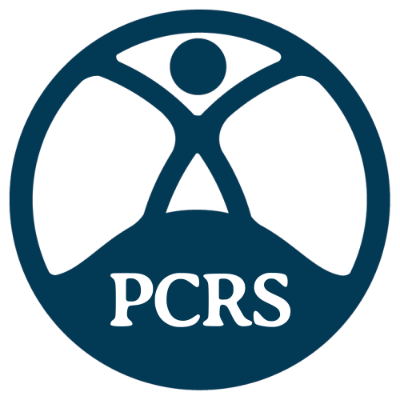The problem with AMR
Antimicrobial resistance (AMR) continues to be a high priority global issue1,2 and there is a direct relationship between the prescribing of antimicrobials and the development of AMR.3, making infections harder to treat and increasing the risk of disease spread, severe illness and death.4
In the GRAM Report, a systematic review recently published by The Lancet, antimicrobial resistance was attributable to an estimated 1.27 million deaths globally in 2019. The greatest impact on AMR was drug-resistance in lower respiratory infections, causing over 400,000 deaths.5
Prof. Jonathan Cooke, Imperial College London. commented in the recent Health Europa – Special Report “In all health economies, most patients present problems with RTI’s to their GPs; accounting for at least 50% of GP’s prescribing of all antibiotics. We know that most of those RTI’s are viral and are not susceptible to antibiotics.” 6
Download:
Health Europa Special Report January 2022
Fighting antimicrobial resistance with innovative POC testing, with commentary from Prof. Jonathan Cooke on the problem of AMR and the use of CRP testing
British Medical Journal
Prof. Jonathan Cooke et al gives a narrative review of CRP POCT and antibacterial use in patients who present with symptoms of RTI
|
CRP testing in the Netherlands
We talked to Dr Rogier Hopstaken, a GP in the Netherlands, which reported one of the lowest consumption of antibiotics in Europe, he said:
“CRP POCT has enormous potential to curb the problem (of AMR). This could be applied around the globe and initiate a change in antibiotic prescribing behaviours.”
In his recent analysis published in the British Journal of General Practice: ‘Implementing point of care CRP testing for better diagnosis of acute respiratory infections’, Rogier reviews international experiences, barriers to implementation and recommendations on next steps.
Go to:
Health Europa Special Report January 2022
Answering healthcare needs with POC testing, with commentary from Dr. Rogier Hopstaken on some of the key benefits of CRP testing in Primary Care
British Journal of General Practice
Dr Rogier Hopstaken et al recently published: Implementing POC CRP testing for better diagnosis of acute respiratory infections. A review of international experiences, barriers to implementation and next step recommendations
NEW Pragmatic Guidance launched in the UK
Whilst in the UK, following the withdrawal of the 2014 NICE guidelines for pneumonia in adults during the COVID-19 pandemic, which included CRP POCT. PCRS: Primary Care Respiratory Society and a multi-disciplinary team of
participants, including: Prof Jonathan Cooke, Dr Maisun Elftise, Val Gerrard, Vikki Knowles, Deborah Leese, Liz Cross, Dr Fiona Mosgrove, Amanda Roberts and Dr Mukesh Singh have developed an independent pragmatic guide to help
reduce inappropriate antibiotic prescribing for COPD and RTIs, that helps primary care teams implement CRP POCT.*

Go to:
PCRS Guide
Primary Care Respiratory Update: The place of point of care testing for C-Reactive Protein in the community care of respiratory tract infections
The PCRS Guide examines the evidence for the use of CRP testing and explores some of the barriers to use, providing two helpful algorithms which aim to support antibiotic stewardship and avoid unnecessary antibiotic prescribing through the use of CRP testing.
Click the graphics below to view the full Report and Algorithms.
Algorithm for IE-COP
Algorithm for RTIs that are not associated with COPD
Reference: PCRS. Primary Care Respiratory Update: The place of point of care testing for C-Reactive Protein in the community care of respiratory tract infections, 2022
We spoke to Liz Cross Lead Nurse, Single Practice PCN, UK, and a participant in the development of the PCRS Guide: “I see first-hand the critical role diagnostics can play in improving patient care. With a biomarker like CRP we are able to better determine if a patient will benefit from antibiotics, or if they have a virus that will improve with time. This correct diagnosis means a healthier outcome for the patient, less time in the clinic with repeat visits, and is a key component in our fight against AMR. Having this diagnosis near the patient with a point of care test, allows these results to be shared in that initial visit and change the course of treatment.”
Also in the UK, BIVDA releases a new independent report on tackling AMR
The British In Vitro Diagnostics Association (BIVDA), in partnership with LumiraDx, has also released the Testing Times Report, a report which outlines the role of rapid diagnostics in tackling AMR and identifies barriers to their uptake in primary and community care in the UK.
To inform the report, an independent group of healthcare professionals, academics and Government advisors on AMR shared their insights into policy and frontline challenges.
According to the report, despite the availability of the C-Reactive Protein (CRP) test, most antibiotics are prescribed without a determination of whether the patient has a bacterial infection that can be treated by antibiotics.
Go to:
Testing Times Report
The role of rapid diagnostics in tackling antimicrobial resistance and identifying barriers to uptake in primary and community care.
Available on the LumiraDx Platform, our CRP Test is a quantitative, rapid POC test for use with direct fingerstick, venous whole blood and venous plasma samples, providing a determination of C-Reactive Protein in just 4 minutes.
Because the Platform is highly portable, the CRP test can be brought directly to the patient to help assess if they need an antibiotic prescription. Patients ≥2 years of age can be tested by a HCP: at hospital, in a clinic, in pharmacy, at their nursing home and even in their home.
Onnor Hampson, a Respiratory Matron from the Knowsley Community Respiratory Service, based in the UK, talks to us about her teams use of the CRP test:
“The LumiraDx Platform is so easy to use, highly portable and with the ability to use the connectivity function for transfer of results into the patient’s health records – it is a great feature. We are happy to have the LumiraDx CRP Test as part of our community respiratory pathway.”
Go to:
CRP Test Performance Data
Poster presentation from the 32nd ECCMID, Lisbon: Performance Evaluation of a new, microfluidic Point of Care Test for C-Reactive Protein
CRP POCT Toolbox
Download recent publications and articles reviewing how CRP POCT can help in the fight against AMR
Independent Report:
Primary Care Respiratory Society. UK
A ‘pragmatic guide’, to help reduce inappropriate antibiotic prescribing for COPD and RTIs, helping primary care teams implement CRP POCT
Testing Times Report
An independent report discussing the role of rapid diagnostics in tackling antimicrobial resistance and identifying barriers to uptake in primary and community care.
Published Papers:
British Medical Journal
Prof. Jonathan Cooke et al – a narrative review of CRP POCT and antibacterial use in patients who present with symptoms of RTI
Health Europa Special Report – April 2022
Answering healthcare needs with POC testing, with commentary from Dr. Rogier Hopstaken on some of the key benefits of CRP testing in Primary Care
British Journal of General Practice
Dr Rogier Hopstaken et al – implementing POC CRP testing for better diagnosis of acute respiratory infections, a review of international experiences, barriers to implementation and next step recommendations
Congress Poster:
32nd ECCMID, Lisbon
Performance evaluation of a new microfluidic POCT for CRP presented at ECCMID - the LumiraDx CRP test showed excellent agreement to the reference method and very good agreement between samples matrices
Articles:
Health Europa Special Report – January 2022
LumiraDx: Fighting antimicrobial resistance with innovative POC testing, with commentary from Prof. Jonathan Cooke on the problem of AMR and the use of CRP testing
References:
1. World Health Organisation (WHO). Global action plan on antimicrobial resistance, 2015.
2. O'Neill J. Tackling drug-resistant infections globally: final report and recommendations. London: HM Government and Wellcome Trust, 2016.
3. Goossens H, Ferech M, Vander Stichele R, et al. Outpatient antibiotic use in Europe and association with resistance: a cross-national database study. Lancet
2005;365:579–87.
4. World Health Organisation (WHO). Antimicrobial Resistance Factsheet, November 2021.
5. The Lancet. Global burden of bacterial antimicrobial resistance in 2019: a systematic analysis, 2022.
6. Cooke J, Llor C, Hopstaken R, et al. Respiratory tract infections (RTIs) in primary care: narrative review of C reactive protein (CRP) point- of- care testing (POCT) and
antibacterial use in patients who present with symptoms of RTI. BMJ Open Resp Res 2020;7:e000624. doi:10.1136/ bmjresp-2020-000624.
7. European Centre for Disease Prevention and Control. Antimicrobial consumption in the EU/EEA (ESAC-Net) - Annual Epidemiological Report 2020. Stockholm: ECDC; 2021
* The production of the Primary Care Respiratory Update Report has been funded by an educational grant from LumiraDx Ltd. The sponsor has had no input to the content of
this article and editorial control rests exclusively with PCRS
Not all products are available in all countries and regions. Please check with your local LumiraDx sales representative or distributor for availability in specific markets.
© 2023 LumiraDx. All rights reserved, worldwide. Registration Number: 09206123.


















